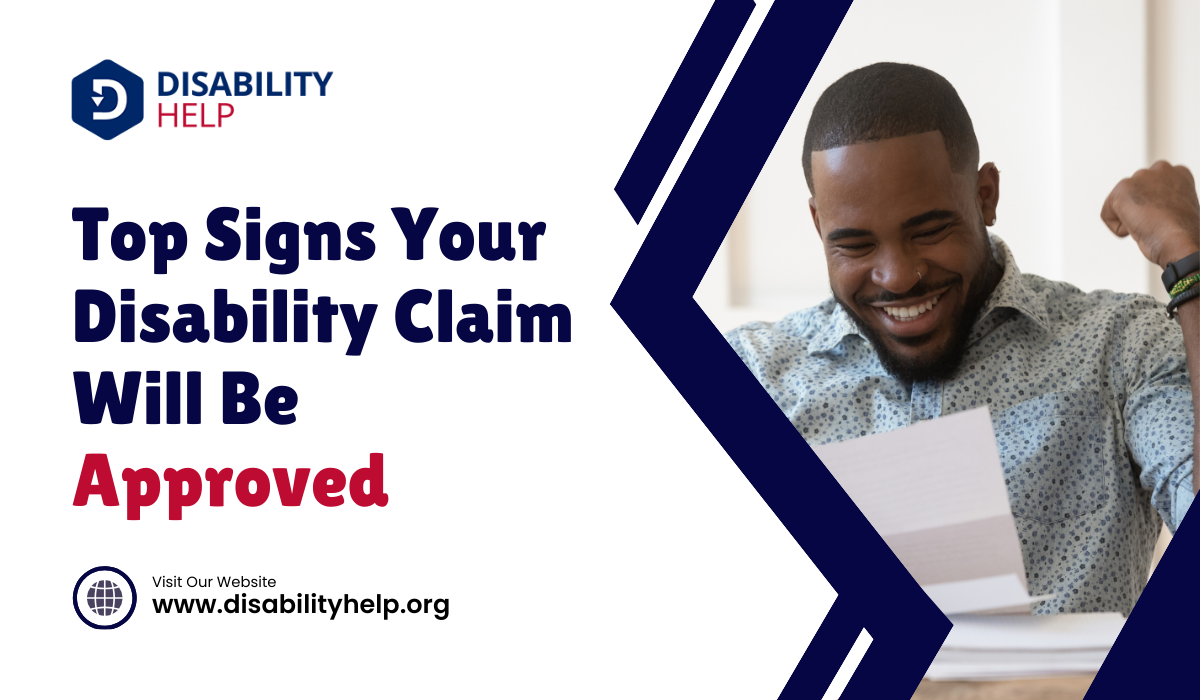Section 504A provision of the Rehabilitation Act of 1973 that prohibits discrimination based on disability in p... and Section 508 of the RehabilitationThe process of helping individuals with disabilities achieve and maintain their optimal physical, se... Act both aim to prevent discrimination based on disability but have different scopes. Section 504 guarantees individuals with disabilities have equal accessThe principle that all individuals, including those with disabilities, should have equal opportunity... to education, employment, and public life through reasonable accommodationsModifications or adjustments in healthcare settings to support patients with disabilities. in programs receiving federal funding. Meanwhile, Section 508 focuses on the accessibilityThe design of products, devices, services, or environments to be usable by people with disabilities.... of electronic and information technology for federal agencies, benefiting both employees and the public. Stay with us to explore their impacts on individuals and organizations.
Key Takeaways
- Section 504 prevents disability discriminationUnfair treatment of individuals based on their disability in areas such as employment, education, an... in programs receiving federal funds, while Section 508 mandates EIT accessibility for federal agencies.
- Section 504 focuses on equal access to education, employment, and public life for individuals with disabilities.
- Section 508 requires federal agencies' digital content to be perceivable, operable, understandable, and robust for accessibility.
- Section 504 mandates reasonable accommodations for individuals with disabilities in schools and workplaces.
- Section 508 ensures electronic information is accessible to both federal employees and the public.
Historical Context of the Rehabilitation Act

Although it might seem like a recent development, the Rehabilitation Act actually dates back to 1973, when it was first signed into law. This legislation marked a significant step forward in the fight for the rights of individuals with disabilities.
As a society, we've come to understand the importance of inclusionThe practice of creating environments in which any individual or group can be and feel welcomed, res... and equality, and the Rehabilitation Act laid an imperative foundation for these values. Before its enactment, many people with disabilities faced barriers that limited their access to education, employment, and public life.
Overview of Section 504
Let's explore Section 504, which aims to prevent discrimination based on disability in programs receiving federal assistance.
We should understand its purpose and scope, as well as who qualifies for protection under this law.
Together, we'll examine the rights it guarantees and the protections it offers to guarantee fairness and accessibility.
Purpose and Scope
Section 504 of the Rehabilitation Act of 1973A U.S. law that prohibits discrimination based on disability in federal programs and services, inclu... plays an essential role in guaranteeing equal access and eliminating discrimination based on disability.
It's a civil rightsThe rights of individuals to receive equal treatment under the law, including protection against dis... law that prohibits discrimination against individuals with disabilities in programs and activities that receive federal financial assistance.
We must understand that its purpose is to level the playing field, allowing everyone the opportunity to participate fully.
Section 504 covers various aspects of everyday life, from education to employment and more.
By addressing barriers, it guarantees that public entities and recipients of federal funds make reasonable accommodations for individuals with disabilities.
This means that everyone, regardless of their abilities, should have the chance to access services and opportunities without facing unnecessary obstacles or prejudice.
Eligibility and Coverage
Eligibility and coverage under Section 504 are crucial for understanding who benefits from its protections. Section 504 is designed to shield individuals with disabilities from discrimination, especially in programs that receive federal financial assistance.
We should note that it doesn't just cover students in educational settings but extends to various public and private sectors. To qualify, a person must have a physical or mental impairmentA loss or abnormality of a body structure or function, whether physical, mental, or sensory, often a... that substantially limits one or more major life activities.
When we look at this, we see how wide its reach is. Institutions like schools, hospitals, and employers must comply if they receive federal funds.
This guarantees that people with disabilities can access services and opportunities comparable to those available to others. Understanding eligibility helps us recognize the breadth of support Section 504 offers.
Rights and Protections
While exploring the rights and protections under Section 504, we discover its robust framework designed to prevent discrimination against individuals with disabilities. This section of the Rehabilitation Act guarantees that no qualified individualA person who meets the necessary skills, experience, and other job-related requirements and can perf... with a disability is excluded from, denied the benefits of, or subjected to discrimination under any program or activity receiving federal financial assistance.
It establishes a level playing field by requiring reasonable accommodations in education, employment, and other areas.
We need to understand that Section 504 is about equal access and opportunity. It mandates changes in policies, practices, and procedures to provide inclusivity.
Whether it's providing sign language interpreters or modifying facilities, these actions guarantee individuals aren't disadvantaged. By fostering an inclusive environment, Section 504 empowers individuals to participate fully in society.
Overview of Section 508
Understanding Section 508 is essential for ensuring that digital and electronic information is accessible to everyone, including individuals with disabilities. This section of the Rehabilitation Act mandates that all federal agencies make their electronic and information technology (EIT) accessible.
We must consider how people with disabilities engage with websites, software, and documents. This law applies to federal employees and the public accessing federal information.
In practical terms, Section 508 requires compliance with specific accessibility standards. These standards often involve making sure that websites are navigable using screen readers, videos are captioned, and content is perceivable and operable by all users.
Key Objectives of Section 504
EquityFairness and justice in the way people are treated, especially in the allocation of resources and op... is at the heart of Section 504, which aims to eliminate discrimination against individuals with disabilities in programs and activities receiving federal financial assistance.
As we explore its key objectives, let's focus on guaranteeing accessibility and equal opportunity. Section 504 mandates that no qualified individual with a disability shall be excluded from, denied benefits of, or subjected to discrimination under any program or activity that receives federal funds.
We understand that this includes schools, health services, and public agencies, so they must accommodate the needs of individuals with disabilities.
By advocating for reasonable adjustments, Section 504 guarantees that barriers are removed, fostering an inclusive environment where everyone can participate fully.
It's about leveling the playing field and assuring fair treatment for all.
Key Objectives of Section 508
Inclusivity drives the essence of Section 508, focusing on guaranteeing that electronic and information technology is accessible to individuals with disabilities. Our primary goal is to eliminate barriers in technology, enabling everyone to have equal access to informationThe right of individuals with disabilities to obtain and use information, often requiring accessible... and opportunities.
Imagine not being able to use a website because it doesn't accommodate screen readers—Section 508 works to prevent such scenarios.
We aim to guarantee that federal agencies create and maintain accessible digital content. Whether it's websites, software, or documents, all must be usable by people with diverse abilities.
This means designing with accessibility in mind from the start, fostering an environment where technology empowers rather than hinders. By embracing these objectives, we promote a more inclusive society where technology opens doors for everyone.
Entities Subject to Section 504
While Section 508 emphasizes making technology inclusive and accessible, Section 504 broadens our focus to encompass a variety of entities that receive federal funding.
We're talking about schools, hospitals, and other programs that benefit from federal dollars. These entities must guarantee their services are accessible to everyone, including individuals with disabilities. If they don't, they risk losing that essential funding.
Section 504 applies to public and private institutions alike as long as federal financial assistance is involved. This includes state and local government programs, education institutions, and non-profit organizations.
Entities Subject to Section 508
When we talk about Section 508, we're focusing specifically on federal agencies and their use of electronic and information technology (EIT). This part of the Rehabilitation Act guarantees that all EIT developed, procured, maintained, or used by federal agencies is accessible to people with disabilities.
It's not just about websites; it covers software applications, multimedia content, and even office equipment like copiers and fax machines.
Section 508 applies directly to federal agencies, meaning that if they're creating or purchasing technology, it must be accessible. This requirement encourages agencies to take into account accessibility from the start, guaranteeing that everyone, regardless of ability, can access and use information technology.
Compliance Requirements for Section 504
Let's explore the compliance requirements for Section 504, focusing on accessibility in educational settings.
We must guarantee that institutions provide reasonable accommodations to support students with disabilities.
Accessibility in Education Settings
Guaranteeing accessibility in education settings is essential under Section 504, which mandates that schools receiving federal funding provide equal access to education for students with disabilities.
We need to guarantee that every student has the chance to learn and succeed, regardless of their abilities. Schools must identify students who need assistance and develop accommodations like modified curricula, assistive technologies, and individualized support services.
By doing this, we create an inclusive environment where everyone can thrive.
Section 504 also requires us to eliminate barriers that might prevent participation in academic and extracurricular activities.
Schools should regularly evaluate their compliance efforts and address any gaps.
Reasonable Accommodation Standards
While schools navigate the mandates of Section 504, it's crucial to understand the reasonable accommodationModifications or adjustments to a job or environment that enable a person with a disability to perfo... standards that guarantee compliance. We've got to make certain students with disabilities receive the necessary support to participate fully in educational programs.
These standards require us to make accommodations that are both effective and appropriate without imposing undue hardshipA legal concept that refers to significant difficulty or expense imposed on an employer or service p... on the institution.
Let's focus on the practical ways we can implement these accommodations. It might involve modifying teaching methods, providing assistive technology, or even adjusting schedules.
The key is flexibility and open dialogue with students and parents to identify specific needs. By doing so, we foster an inclusive environment that respects each student's right to education.
Our commitment to these standards guarantees that everyone has an equal opportunity to succeed.
Compliance Requirements for Section 508
When it comes to compliance with Section 508, we need to understand its requirements to guarantee accessibility in electronic and information technology. This confirms that everyone, regardless of ability, can access and use digital content and services.
To achieve this, we must adhere to several key principles:
- Perceivable: Information should be presented in ways users can perceive, such as text alternatives for images.
- Operable: Users should be able to navigate interfaces using different methods, like keyboard controls.
- Understandable: Content should be clear and straightforward, allowing users to comprehend and interact with it effectively.
- Robust: Content should function across various devices and technologies, including assistive tools.
- Regular Testing: Consistent evaluation and updates confirm ongoing compliance with evolving standards.
Impacts on Individuals and Organizations

As we explore the impacts of Sections 508 and 504, it's essential to understand how accessibility compliance requirements affect both individuals and organizations.
Noncompliance can lead to serious legal consequences, pushing organizations to adaptA grassroots disability rights organization in the U.S. that focuses on promoting community-based se... their digital content to meet these standards.
Accessibility Compliance Requirements
Understanding accessibility compliance requirements is crucial for both individuals and organizations working to guarantee inclusivity.
We need to guarantee that our digital and physical spaces are accessible to everyone, including those with disabilities. Section 508 focuses on electronic and information technology, requiring federal agencies to make their digital content accessible.
Meanwhile, Section 504 prohibits discrimination based on disability in programs receiving federal assistance.
Here's what we should consider:
- Assess current accessibility: Regularly evaluate our facilities and digital content.
- Implement best practices: Use guidelines like the Web Content Accessibility Guidelines (WCAG).
- Training: Educate staff on accessibility standards and their importance.
- Feedback mechanisms: Enable individuals to report accessibility issues efficiently.
- Continuous improvement: Stay updated with evolving standards and technologies.
Legal Consequences for Noncompliance
Failing to comply with Sections 508 and 504 can lead to serious legal repercussions for both individuals and organizations. When organizations don't meet these accessibility standards, they risk facing lawsuits and financial penalties.
For individuals, particularly those responsible for ensuring compliance, there can be professional consequences such as job loss or damage to reputation.
Legal action can result in costly settlements or judgments, not to mention the negative publicity that can harm an organization's credibility.
It's essential for us to remember that these sections aren't just legal obligations; they're commitments to inclusivity and equal access.
Adaptations for Digital Content
When we adapt digital content to meet Sections 508 and 504 standards, it improves accessibility for everyone, not just those with disabilities.
These adaptations guarantee that our websites, documents, and media are accessible to a broader audience, which can enhance user experience and engagement. For organizations, this means reaching more people and potentially increasing customer satisfaction.
Let's explore some key adaptations:
- Alt Text for Images: Descriptive text helps screen readers convey image content.
- Captioning and Transcripts: Providing these for audio and video content guarantees everyone can understand.
- Keyboard Navigation: Guarantees users can navigate without a mouse.
- Consistent Structure: Logical heading order and layout aid comprehension.
- Color Contrast: Improves visibility for users with visual impairments.
Conclusion
In understanding the differences between Section 504 and Section 508 of the Rehabilitation Act, we've seen how each plays an essential role in promoting accessibility and equal opportunity. While Section 504 focuses on preventing discrimination based on disability within federally funded programs, Section 508 guarantees that electronic and information technology is accessible to all. By complying with these regulations, we can create inclusive environments that empower individuals with disabilities and foster a more equitable society for everyone.






